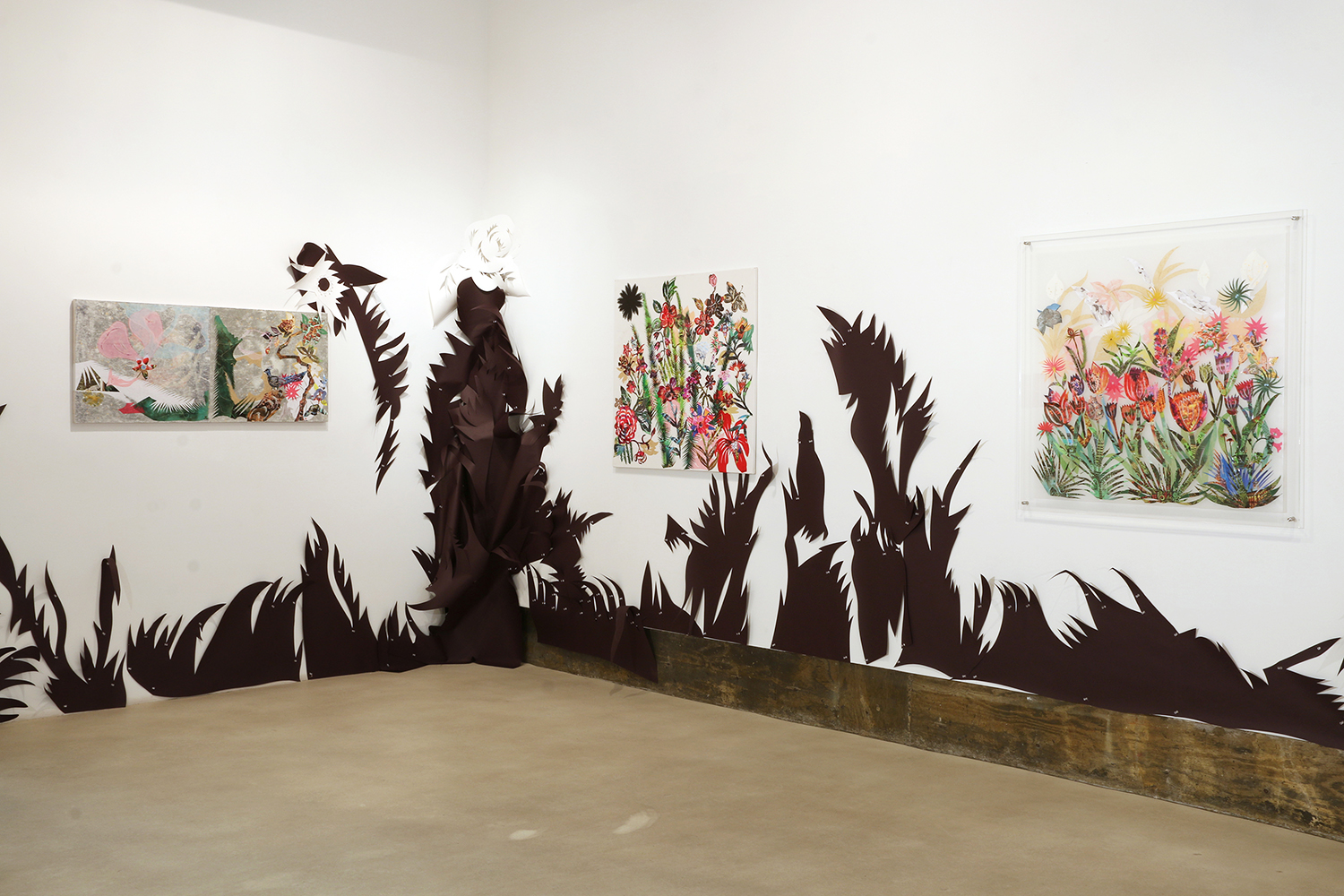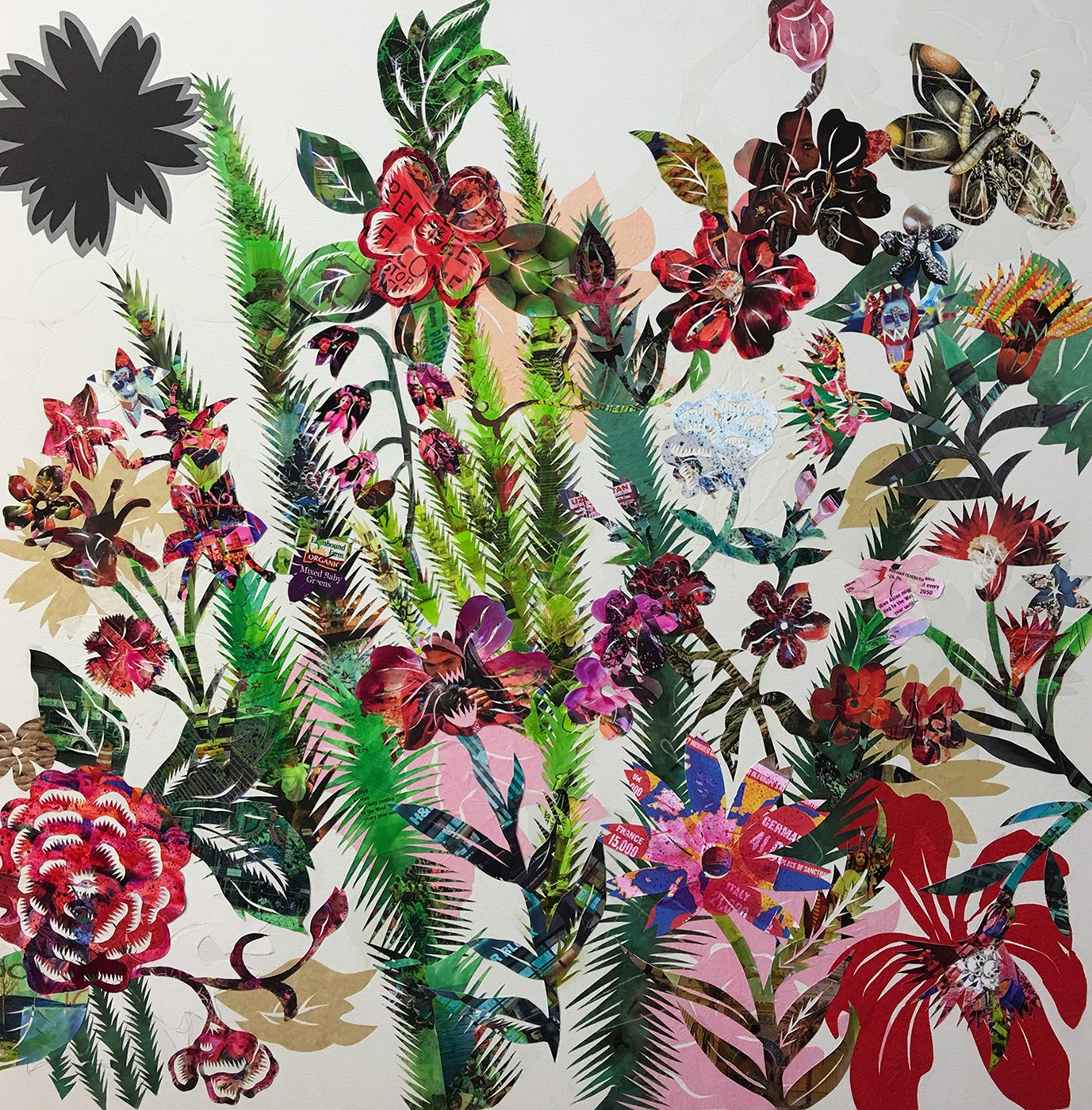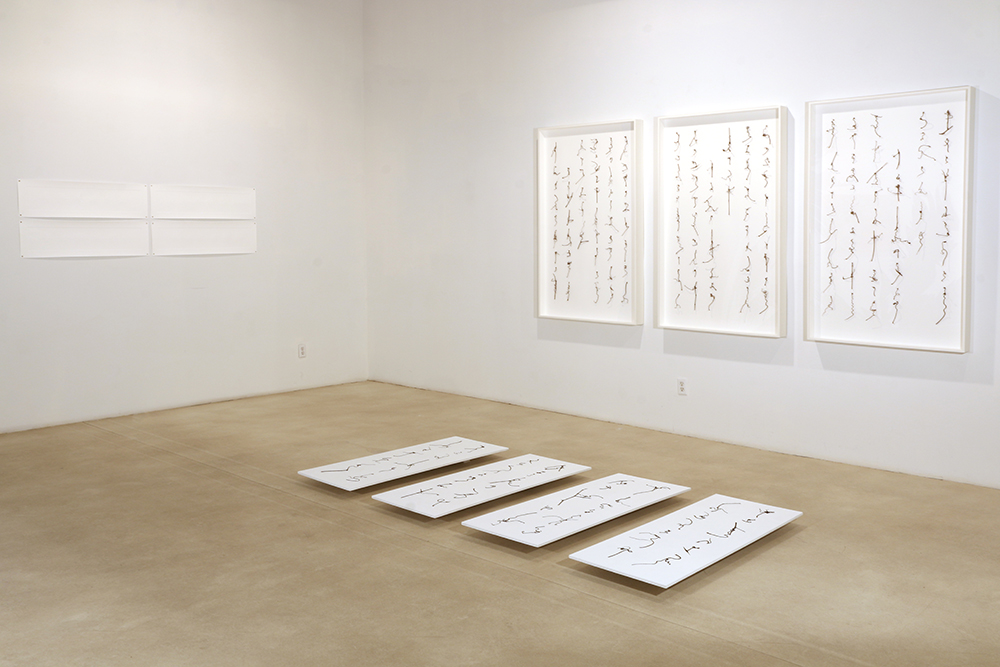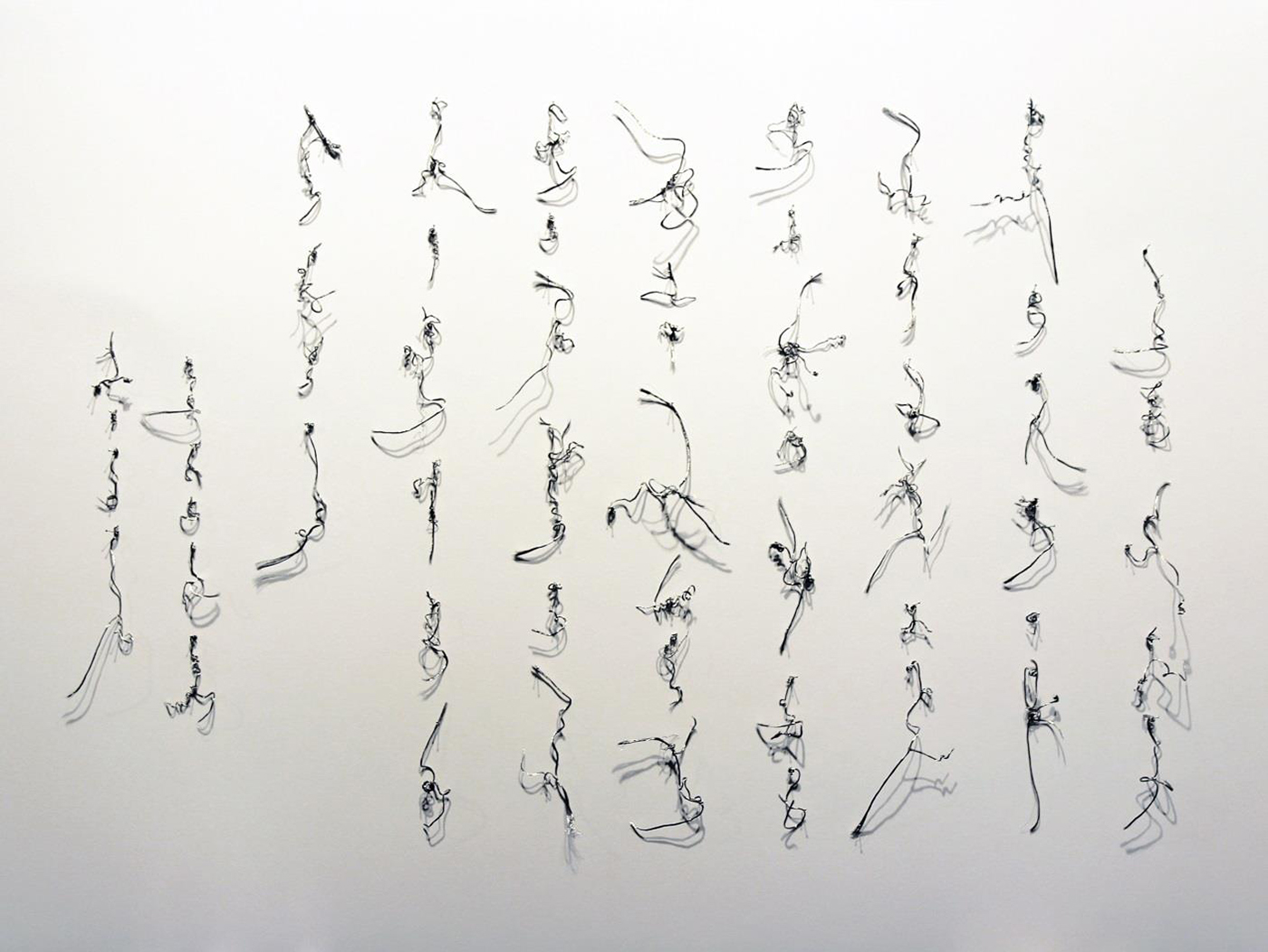Shows
Lin Yan, Song Xin and Cui Fei: “In Perspective”


The latest exhibition at Chambers Fine Art’s New York location, “In Perspective,” confirms the gallery’s reputation as a leading institution in the presentation of up-and-coming Chinese artists in the United States. The group show brings together three artists trained in China, who now live and work in New York. They appropriate long-standing artistic methods found in their heritage, which are fused with contemporary techniques and concepts unique to each of their own practices to explore present-day society.
Song Xin’s connection to traditional practice is most prominent in the exhibition. The artist studied jianzhi, a traditional paper-cutting technique, at the Central Academy of Fine Arts in Beijing. Once she relocated to the United States, Song used this approach to create collage paintings influenced by a comparatively unrestrictive, politically charged Western mass-media culture. In the exhibited paintings from her “Life in Full Bloom” series (2016), carefully selected illustrations from magazines and newspapers are cut and arranged into seemingly joyful flowers and foliage. Though not evident at first glance, the magazine pictures that form the basis of the collage include powerful photographs of refugees and European nationalist leaders. Each painting thus becomes dramatically deceptive, concealing social and political commentary behind a sugarcoated, eye-pleasing surface. This hidden reality speaks to society’s desensitization towards tragedy due to constant bombardment and manipulation across various visual platforms we consume daily; Song's transformations inject new importance into these readily discarded materials by bringing them to the forefront in her work.


Paper is also an integral material in the work of Lin Yan, a Beijing-born artist who also studied at the Central Academy of Fine Arts before moving to New York in 1993. Her practice is heavily influenced by Taoist thought and a search for simplicity. Using handmade xuan paper, a traditional medium in Chinese painting and calligraphy, Lin creates intimate, ink-painted installations that reference aspects of the urban and architectural environment around her. A sense of lightness emanates from each piece. The paper, freed from a frame, is thin and nearly transparent, and has been meticulously sculpted by its maker. The tranquility captured from industrial and urbanized environments creates a balance that is faithful to her Taoist influence; she creates still moments through minimalist materials, reflecting densely populated places, such as Beijing and New York. Lin’s works, through the various found objects and materials that complement the paper, subtly allude to issues surrounding urban growth, and point to the ephemeral and ever-changing nature of our habitats. Her 2014 installation Me, Going to Beijing depicts tiles from a Beijing rooftop, a reference to the Chinese government’s systematic destruction of low-rise homes in favor of residential and commercial towers. Living in Brooklyn allowed Lin to draw inspiration from visual and material aspects of this post-industrial borough, as seen in several pieces like Little Empire (2014). This exploration of Beijing’s urban climate and New York’s established cityscapes is discovered through Lin’s unconventional use of traditional media. Living between two cultures prompted Lin to investigate the contrast between concrete structures and soft, fragile materials to contemplate renewal and transformation in both cities.
Cui Fei, the third artist included in the exhibition, arrived in the United States in 1996. She then started her “Manuscript of Nature” (1999–2010) and “Tracing the Origin” (2000–16) series, both of which are represented in the exhibition. They consist of mixed-media installations featuring pseudo-Chinese characters formed by dried grape tendrils and sand attached to otherwise blank panels. The idea to incorporate organic materials came by chance to the artist, after she stumbled upon a grape tendril that fell off from an art installation; its similarity with a Chinese character was a revelation for her. Cui noted in an interview for the 2011 Asia Contemporary Art Week that her work invokes the history of Chinese writing, which “originated from nature as ideograms and that over time the characters were simplified, abstracted and separated from their original context.” Cui brings her original calligraphic characters to life. She gives them an organic, three-dimensional body that transcends the flatness of calligraphy and calls attention to the ancient roots of the Chinese language. Residing overseas led to Fei’s blending of cultures through the Western theory of transculturalism and the Chinese concept of interconnectivity; Fei’s work emphasizes our cultural differences and defies the limitations that define them.


“In Perspective” is a coherent exhibition that threads together works sharing a common sense of materiality. Viewers are drawn to the surface of the works, tempted to reach out and touch; the installations unfold before our eyes and invite us to get lost in them. The historical significance that the artworks bear, either through their use of traditional techniques or references to ancient and contemporary history, provides an additional sense of cohesion. “In Perspective” achieved the difficult balance of presenting works that both mirror and complement each other in a thought-provoking, engaging way. The exhibition will hopefully contribute to shining a light on other expatriate artists living and working in the United States.
“In Perspective: Lin Yan, Song Xin and Cui Fei” is on view at Chambers Fine Art, New York, until January 28, 2017.







